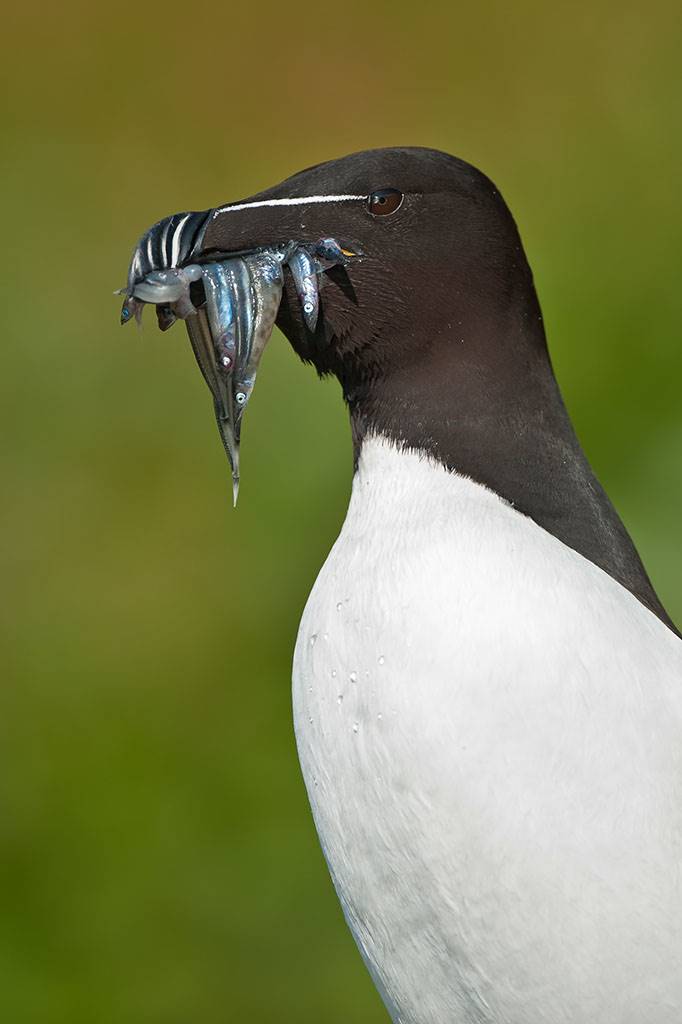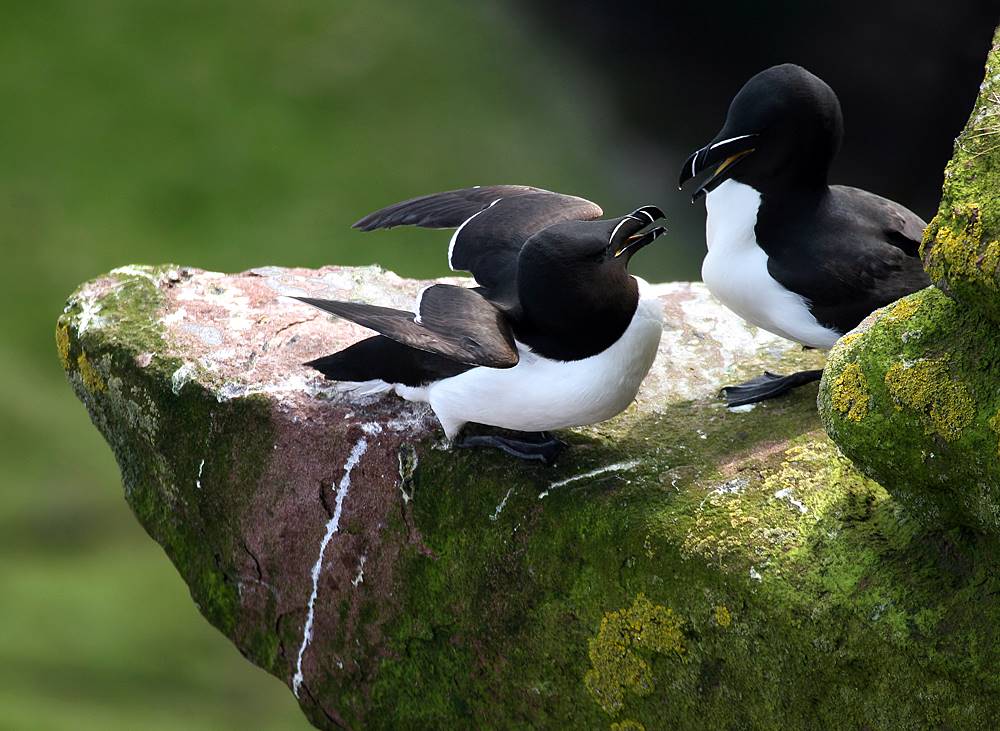

The world of avian wonders is filled with captivating species, each with its own unique features and allure. Among them, the sleek Razorbill (Alca torda) stands out for its distinctive beak and striking plumage. In this article, we delve into the unforgettable encounter with this remarkable bird, exploring its fascinating characteristics and the thrill of witnessing its beauty up close.

The Razorbill's Habitat and Distribution: The Razorbill is a seabird that inhabits the cool coastal waters of the northern hemisphere.

Physical Appearance: The Razorbill boasts a sleek and streamlined body, perfectly adapted for a life at sea. It features a black back, wings, and a distinctive white underside, creating a striking contrast. However, what truly sets it apart is its distinct beak. The Razorbill possesses a large, thick, and triangular-shaped beak that shines in a vibrant hue of black.

Feeding Habits: The Razorbill is a proficient hunter, primarily feeding on small fish, crustaceans, and marine invertebrates. Its specialized beak allows it to snatch its prey swiftly underwater, making it an agile and efficient swimmer. Witnessing a Razorbill diving into the ocean with precision and resurfacing with a mouthful of food is an unforgettable sight.

Breeding Behavior: Breeding season is an especially enchanting time to encounter the Razorbill. These birds form monogamous pairs and return to their nesting sites each year. The female typically lays a single egg on the rocky ledges or cliff faces. Both parents take turns incubating the egg and later raising the chick. This remarkable parental care showcases the dedication and bond between Razorbill pairs.

Conservation Status: While the Razorbill population remains relatively stable, it faces some conservation challenges.

Ecotourism and Birdwatching Opportunities: For avid birdwatchers and nature enthusiasts, encountering the Razorbill in its natural habitat is a rewarding experience. Many coastal regions offer ecotourism opportunities that allow visitors to witness the beauty of these birds up close.

Conclusion:The sleek Razorbill is a captivating bird with its distinctive beak and striking plumage. Its presence along the coastal waters of the northern hemisphere adds a touch of beauty to the rugged landscapes it calls home. Witnessing this remarkable species in action, whether diving for food or caring for its young, is an unforgettable encounter that reminds us of the awe-inspiring diversity of our natural world. Let us appreciate and protect these magnificent creatures to ensure that future generations can share in the joy of encountering the sleek Razorbill.
